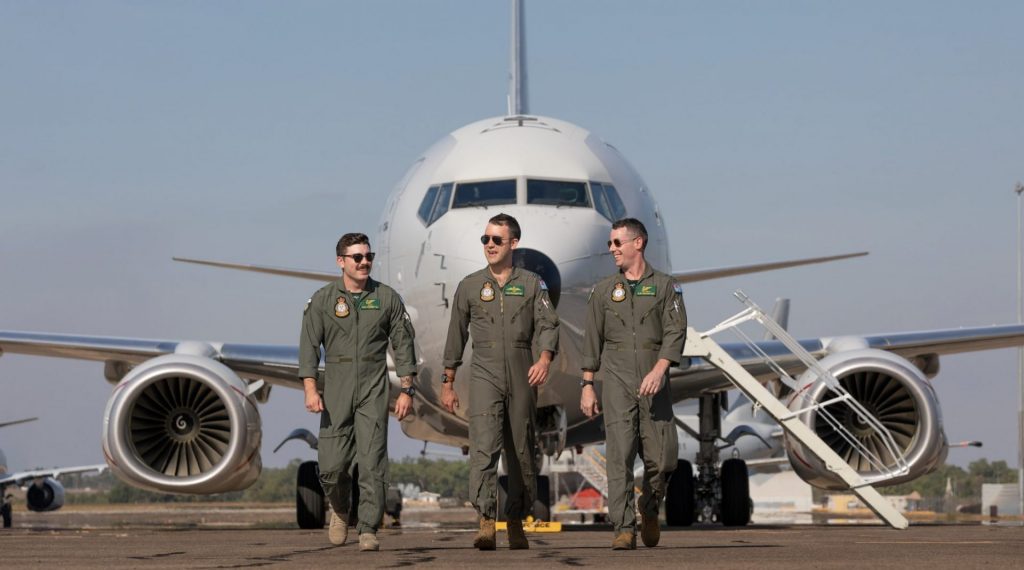
RAAF P-8A Poseidon crews for the first time took part in Exercise Diamond Storm in June.
The month-long training program is the last of three activities which form part of the air warfare instructor course (AWIC) and is conducted alongside US forces in the Top End.
The change in policy was made possible because a new category within the instructor course allowed the P-8A to be integrated into the event, which traditionally features more attack-minded aircraft such as the F-35A Lightning IIs, F/A-18F Super Hornets, and EA-18G Growlers.
The RAAF P-8 Poseidon, however, is a maritime patrol aircraft used for a variety of roles including reconnaissance and search and rescue. It’s a military variant initially of Boeing’s workhorse narrowbody 737 Next Generation.
Squadron Leader Matthew Coombes, training and standards flight commander with No. 11 Squadron, said maritime strike was a key area where multiple participants can work together.
“As a small Air Force and Defence Force, we need to maximise the efficacy and lethality of every aircraft and missile that we have. Air warfare instructors are a critical enabler for achieving this,” Squadron Leader Coombes said.
The RAAF said that for a maritime nation such as Australia, the core capabilities of the P-8A Poseidon needed to be understood by all of the organisation’s tactical leaders.
“It was a steep learning curve for us, as a traditionally Navy-aligned and supporting platform, to becoming fully integrated into what are traditionally fastjet mission sets. That said, the learning was extraordinarily rewarding for all the MCIs,” Squadron Leader Coombes said.
The RAAF’s Exercise Diamond Storm 22 kicked off on 30 May in the Northern Territory from RAAF Bases Darwin, Tindal, Timber Creek, the Douglas and Daly region, and the Delamere Air Weapons Range. It concluded on 24 June.
The Poseidon is equipped with advanced sensors and mission systems, including a multi-role radar, high-definition cameras, a high-processing acoustic system, and an extensive communications suite.
Australia’s Poseidon fleet is based at RAAF Base Edinburgh and was introduced to partially replace the RAAF’s fleet of AP-3C Orions, together with the MQ-4C Triton unmanned aircraft system.
You can read Australian Aviation’s full profile here.
Last month, Australian Aviation reported how a Chinese J-16 cut across the nose of a RAAF P-8 Poseidon in what Defence has called a “dangerous manoeuvre” that was a safety threat to the Australian crew.
The incident, first revealed on Sunday, took place on 26 May over the South China Sea and saw the fighter jet accelerate so close to the Australian aircraft that a “bundle of chaff” was ingested into its engine.
Defence Minister Richard Marles said the P-8 returned back to base safely but added the incident would not deter the RAAF from continuing to fly over the disputed area.
Prime Minister Anthony Albanese said, “In the Australian government’s view, in the Defence Department’s view, this was not safe, what occurred, and we’ve made appropriate representations to the Chinese government expressing our concern at this.”















